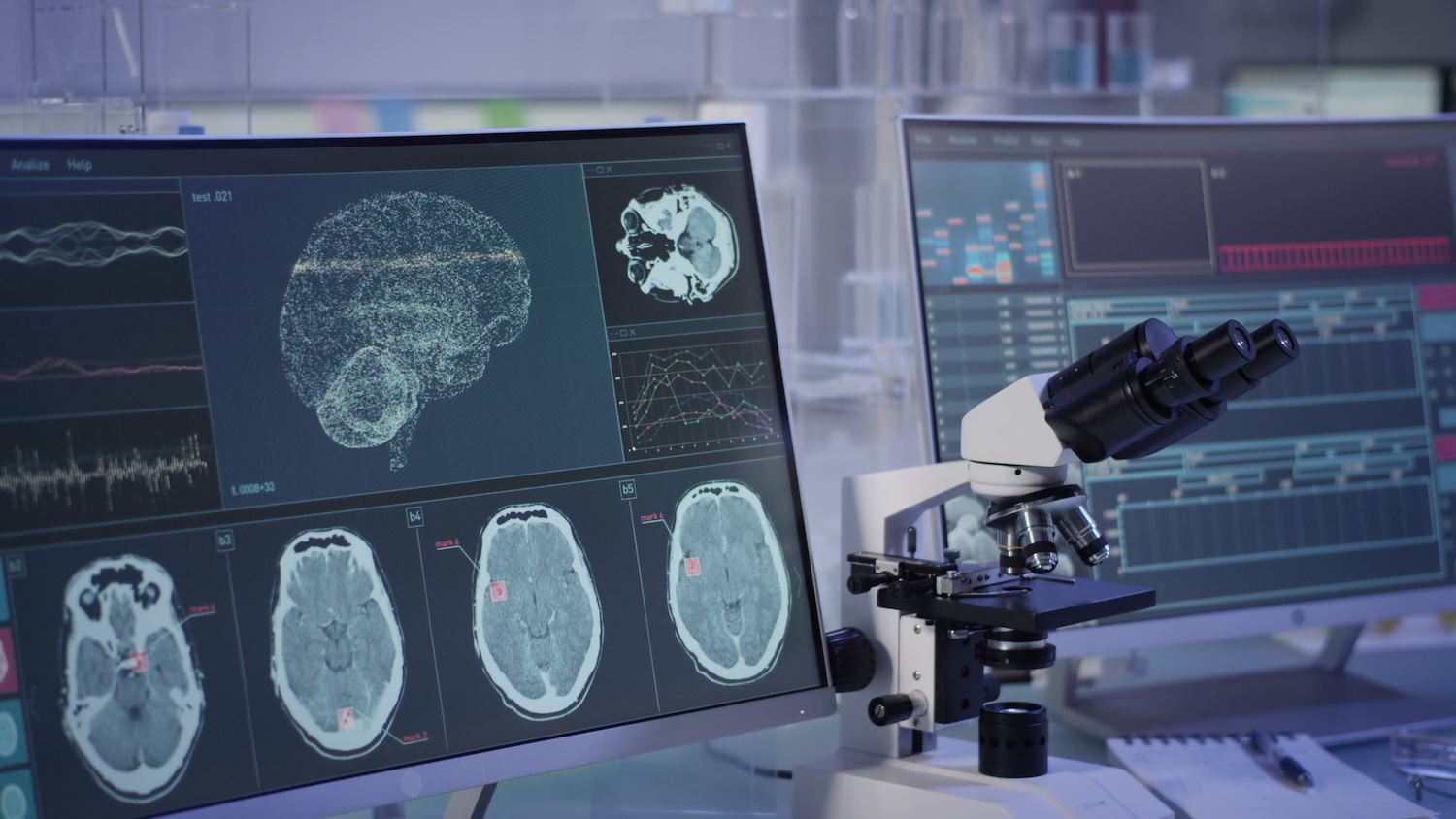
Unveiling the Depths: Navigating Consumer Psychology through Neuro-Marketing
As marketing enthusiasts, we are always eager to penetrate the depths of consumer psychology, to unravel what truly drives their choices and behaviors. One intriguing domain that promises insightful revelations is Neuromarketing – a field where neuroscience meets marketing.
So, what is Neuromarketing? It’s a synergy of two disciplines, gathering insights about consumers’ cognition and behavior from brain science and applying it for enhanced marketing techniques. But why is it pivotal? The answer lies in its potential to uncover genuine consumer responses, which are often veiled beneath articulated words. Virtual as we become in this digital era, the human brain essentially continues to be hardwired with primitive instincts and responses. Consequently, traditional marketing strategies may not always resonate with consumers’ actual preferences or incite desired behavior. Enter Neuromarketing – offering an advanced lens that enables marketers to observe reactions directly from the decision-making epicenter – the consumer’s brain.
Understanding how consumers respond at a neurological level helps create more effective marketing strategies. For instance, it can illuminate how sensory branding can result in stronger emotional connections or reveal which part of a product promotion video triggers maximum engagement. Each piece of data harvested equips businesses with superior tools for eliciting positive reactions from their target audience. An engrossing approach that provides practical insights into neuro-marketing involves analyzing neuromarketing videos. These offer fascinating glimpses into experiments where participants’ neurological responses to different stimuli are measured using tools like EEGs or fMRI scans.
Neuromarketing videos can serve as educational goldmines for marketers willing to up their game by delving deep into root-cause analyses rather than touching upon surface-level interpretations based on explicit feedback alone. Nonetheless, like any advanced technique, neuromarketing calls for ethical considerations too. Professionals diving in must ensure they strive not just for business gains but also responsibly respect and safeguard consumers’ cognitive privacy.
Neuromarketing surfaces as a beacon for marketing enthusiasts who aspire to embrace a more science-driven approach. By unmasking actual consumer responses (not just what consumers claim they prefer), businesses gain access to an invaluable tool that catalyzes tailored strategy creation for meaningful engagement and lasting brand loyalty.
The Science Behind NeuroMarketing

The world of marketing is evolving rapidly, and one of the most enthralling advancements is the use of neuroscience in understanding consumer behavior – an exciting field known as Neuro-Marketing. Our minds are complex networks, each decision we make is governed by intricate neural processes. A potential customer doesn’t merely buy a product; their brain navigates through several subconscious choices before arriving at a decision.
A. Explanation of Neural Processes in Consumer Decision Making
Every buying choice, whether trivial or significant, stimulates specific areas in our brains associated with emotions, preferences and calculations. Studying these neuronal pathways can help marketers tap into consumers’ mindsets to effectively influence their purchasing decisions.
B. How NeuroMarketing Utilizes Brain Imaging and Metrics
Brain imaging technologies like MRI and EEG have been instrumental in this field. By visually representing mental activities during consumer decisions, they manage to decode how various marketing strategies impact cognition and response rate.
C. Key Principles of NeuroMarketing Applied to Videos
Videos, highly effective marketing tools provoking intense emotional engagements amongst viewers, merge seamlessly with neuro-marketing principles. Exploiting elements such as storytelling and sensory stimuli to evoke particular neuronal responses can greatly increase viewer engagement and conversion rates
In essence, Neuro-Marketing transcends traditional marketing practices – it’s about leveraging science to create resonating messages that stimulate consumers right where decisions are made: their brains!
Benefits of Using NeuroMarketing Videos
In recent years, the intersection of neuroscience and marketing, known as neuro-marketing, has gained increasing attention in the business world. One of the most compelling aspects of this is the use of neuro-marketing videos. This blog post highlights three key benefits these video techniques offer.
A. Enhanced Emotional Engagement

Neuro-marketing videos excel at generating emotional engagement. The brain processes visuals 60,000 times faster than text leading to quicker emotional responses. Such content evokes emotions that resonate on a subconscious level, allowing brands to connect more intensely with viewers. It’s not just about what your product does but how it makes customers feel – leveraging these emotional connections can create loyal followers rather than one-time purchasers.
B. Improved Brand Recall and Recognition
Brand recall and recognition are pivotal measures in marketing effectiveness; they mark how memorable a brand or a message is to an audience. Neuro-marketing videos tap into our brain’s inherent bias towards visual content aiding memory retention significantly over audio or text-based forms; stimulating memories through sight and sound increases recall by 55%. As such, using neuro-marketing videos helps consumers recognize your brand faster and remember it longer.
Lastly, neuro-marketing videos are powerful conversion tools. They influence implicit motivations and biases that impact our decision-making process before we’re even consciously aware of them hence affecting purchasing decisions at their root level – the subconscious mind, which could lead to higher conversion rates, increased sales, customer loyalty etcetera.
In conclusion, businesses looking to build deeper connections with their audiences should consider integrating neuro-marketing videos into their marketing strategy for enhanced engagement, improved recall & recognition capabilities and potential boosts in conversion rates & sales.
Elements of Effective NeuroMarketing Videos
A. Storytelling Techniques that Resonate with the Brain
Who doesn’t love a good story? Our brains are practically wired for them. This is why storytelling is such an effective tool in neuro-marketing. It builds a connection and fosters empathy, leading to better customer engagement.
Try weaving vibrant tales around your product or service – maybe its origin, or how it changed someone’s life for the better? It’s all about making your audience feel like they’re part of something bigger, quickly transforming this from a simple purchase to an emotional investment.
B. Visual and Auditory Stimuli for Maximum Impact
Did you know our brains process visuals 60,000 times faster than text? Wild, right? That’s why videos grab attention like nothing else can! Breathtaking visuals paired with immersive soundtracks create an experience that resonates with customers on a deeper level.
Consider illustrating complex concepts with visually appealing infographics or engaging animations. Also, soundtrack matters! Studies show music influences our mood and preferences, so pick tunes that match your brand image perfectly!
C. Incorporating Emotional Triggers
We’d like to think we’re rational creatures always making logical choices, but truth be told – emotions guide most of our decisions.
Tug at those heartstrings! Engage viewers on an emotional level – make them laugh, make them cry, or inspire them to take action. Harnessing such emotional triggers is a game-changer when it comes to making memorable marketing videos.
Remember – deeper the emotion felt while experiencing something, stronger the memory associated with it! It’s not just about selling a product; it’s about creating lasting memories linked to your brand.
There you have it folks – three powerful elements vital in crafting neuro-marketing videos designed to resonate deeply with viewer profiles: compelling storytelling techniques, strategic use of visuals and audio, and capitalizing on emotions. Implement these tips, and watch your engagement levels soar!
While neuro-marketing presents a host of exciting opportunities, it’s only fair to provide a product or service that respects and upholds the ethical standards that society values. Therefore, it’s essential to discuss these concerns when employing neuro-marketing strategies.
Ethical Considerations in NeuroMarketing
A. Privacy Concerns and Informed Consent
In an age where data is hailed as ‘the new gold,’ privacy takes center stage. Neuro-marketing gathers incredibly sensitive information, drawing inferences from subconscious responses. Modern policies mandate explicit informed consent before collecting such data.
Inform your target audience about the kind of information being collected, how it will be used, and with whom (if anyone) it’ll be shared. This transparency builds trust and shows you respect their autonomy and privacy rights.
B. Transparency in Communicating NeuroMarketing Strategies
Much like informed consent, fully disclosing the purpose and methods utilized in your neuro-marketing strategy fosters trust with your consumers. They should know if they are partaking in a process where subconscious psychological cues are being leveraged.
It’s crucial that companies articulate their approach without any deception or ambiguity, as this could harm their brand reputation. Remember: honesty is always the best policy!
C. Balancing Persuasion and Consumer Empowerment
Neuro-marketing is persuasive by nature – It’s designed to influence consumer behavior subtly without their explicit knowledge; this raises ethical questions concerning manipulation.
The key lies in balancing persuasiveness with consumer empowerment. Provide value, educate about choices, but never exploit vulnerabilities for profit. Harnessing buyer psychology should improve customer experience and not lead to regrettable purchases or decisions made under duress.
Tools and Technologies in NeuroMarketing Videos
Utilizing innovative tools and technologies, neuro-marketing videos have revolutionized the marketing landscape. Let’s delve into the essential components of this trend.
A. Neuroimaging Devices and Software
Neuroimaging tools form the foundation of neuro-marketing videos. Sophisticated devices like Functional Magnetic Resonance Imaging (fMRI), Electroencephalography (EEG), and Eye-tracking software provide unparalleled insights about a consumer’s unconscious reactions.

For instance, fMRI decodes changes in brain activity while EEG monitors fluctuations in brainwave patterns, providing real-time data on consumers’ engagement levels. Furthermore, eye-tracking software gives marketers detailed information about what exactly captures viewers’ attention in promotional videos.
These techniques allow marketers to craft content that hits at the heart of human emotion and interest, creating a powerful audience connection.
B. Data Analytics for Interpreting Neurological Responses
Data analytics comes into play once neurological responses have been logged through imaging devices. Sophisticated analytics tools help decipher this raw data by categorizing responses according to predefined metrics such as levels of excitement or concentration.
Custom algorithms can detect specific patterns in neural responses which are then translated into actionable marketing insights. This is an intricate process requiring expertise but leads to effective campaigns when implemented appropriately.
C. Advancements and Trends in NeuroMarketing Technology
The rapid advancements in neuro-marketing technology continue to push its boundaries. Virtual Reality (VR) introduces immersive experiences providing rich data on how people respond to products or scenarios realistically.
Advancements in Artificial Intelligence (AI) also promise significant leaps towards predicting consumer behavior more accurately through advanced machine learning algorithms trained on extensive neurological response data sets.
In addition, companies are exploring predictive neuro-marketing; using gathered insight to predict likely customer reactions before a campaign launch saves both time and resources. neuro-marketing technology offers immense potential for smart advertising strategy — provided one has access to accurate tools and knows how to interpret the data they offer.
Embracing The Future Today: A Foray into NeuroMarketing
In the ever-evolving landscape of marketing, remaining static is not an option for brands that wish to stay ahead of the curve. Venturing into different marketing approaches is crucial and adopting neuro-marketing strategies can yield hugely positive results for any company willing to experiment. For our fellow marketing enthusiasts, we offer insight into this cutting-edge dimension by delving into successful neuro-marketing video campaigns, consumer responses analysis, and lessons from notable examples in this post.
Successful NeuroMarketing Video Campaigns
Videos are potent weapons in a marketer’s arsenal, credited largely to their captivating allure. However, with advancements in technology and a deepening understanding of human perception and response mechanisms emerge even more intricate forms of videos – neuro-marketing videos.
Case Study 1: Coca-Cola’s “Taste the Feeling”
A testament to effective neuro-marketing video campaigns is Coca Cola’s “Taste the Feeling”. By leveraging emotional cues like happiness associated with family or friendships, and infusing them with product consumption visuals, they tap into viewers’ empathy and elicit a craving response.
Analysis Of Consumer Responses In Real-world Scenarios
A holistic aspect of neuro-marketing involves understanding how consumers react when confronted with marketing stimuli in actual scenarios – be it physical stores or digital platforms.
Field Experiment 1: Microsoft Surface Pro Placement
A case-worthy mention here could be Microsoft’s placement strategy for its Surface Pro laptops within popular TV shows such as NCIS LA or Black Mirror. The brand exposure showcased within everyday scenarios on these shows enhanced recall rates, thus driving sales significantly due to subconscious associations made by viewers all together.
Lessons Learned from Notable Examples
Key Takeaway 1: Emotional Resonance Triumphs
From our cases, it’s evident that driving emotional resonance in consumers proves highly effective. Be it the refreshing experience promised by Coca Cola or the lifestyle integration sold by Surface Pro, reaching out to consumers’ hearts certainly helps.
Key Takeaway 2: Subconscious Consistency Matters
Moreover, ensuring a consistent connection between your product’s placement and its envisioned image can also boost customer recall and preference. Subconsciously, viewers make connections that play a significant role when making purchasing decisions.
Neuro-marketing is an unchartered territory ripe with potential if executed correctly. As marketing enthusiasts, we encourage you to delve deep into this fascinating world that cultivates data-driven empathy for your customers and promises unparalleled advantages to sustain in this hyper-competitive market space. The key lies in comprehending not just what your customers need but decoding how they feel about those needs.
Challenges and Criticisms
A. Ethical Concerns and Manipulation
One significant issue commonly raised is the ethical concern of manipulation. Critics argue that by digging into the consumer’s brain, marketers might forge campaigns designed to trigger unconscious responses, leading potential customers into making purchases they wouldn’t necessarily make otherwise.
This consideration raises critical questions about freedom of choice and informed consent in marketing practices, underscoring the need for transparent communication and respect for consumer autonomy in neuro-marketing.
B. Validity and Reliability of Neuro-Marketing Metrics
While neuroimaging technologies offer insights into consumer behavior, queries about the validity and reliability of these metrics still persist. Mainly because human brain processes are dynamic and complex, which makes it challenging to pin down precise neurological responses correlating to specific feelings or emotions consistently.
Many marketers argue that conventional methods such as surveys or focus groups could also yield comprehensive data while being less intrusive and more context-sensitive. Therefore, ongoing efforts are necessary to boost confidence in neuro-marketing metrics’ accuracy.
C. Overcoming Skepticism and Building Trust
Looming skepticism among consumers represents another stumbling block for this emerging field. For some people, the idea of their feelings being mapped through brain data can appear intimidating or invasive.
The key to overcoming this lies in building trust through transparency —— informing consumers accurately about how their data will be collected and used, adhering strictly to privacy laws and guidelines while reinforcing the fact that all neuromarketing research is done with valid consent obtained from participants involved before any data collection begins.
Ultimately, it’s crucial for marketers venturing into neuro-marketing to abate these challenges head-on , only then can the true potential of this fascinating discipline truly flourish.
Future Trends in NeuroMarketing Videos
A. Integration of Virtual Reality and Augmented Reality
One significant trend revolutionizing messaging in neuro-marketing is the integration of Virtual Reality (VR) and Augmented Reality (AR). These technologies offer marketers an immersive tool to create more engaging experiences for the user, provoking both emotional and neurological responses. Researchers use neuro-imaging devices that record how consumers respond within these created realities, allowing brands to precisely tailor their offerings further.
B. Personalization and Customization of NeuroMarketing Content
Personalization and customization in neuromarketing are transforming the way companies connect with consumers. Figureheads in this industry understand that no two brains are the same; as such, marketing campaigns cannot be one-size-fits-all. Utilizing data analytics, it’s possible to analyze insights into consumer behavior patterns in real-time. This technology enables marketers to design personalized content capable of triggering specific neurological responses in diverse consumer groups.
C. The Evolving Landscape of Consumer Neuroscience
The landscape of neuroscience-based consumer research progressively evolves as our understanding deepens regarding how consumer behavior ties with brain activity. Therefore, the future might see an even stronger reliance on hard science in marketing deciphers more about consumers than ever before.
As neuroscience unveils more intricate cognitive processes taken place while making purchasing decisions, we can look forward to current business models being reshaped by constant advances made within neuro-marketing research.
Remember, all these trends should always operate under proper ethical guidelines ensuring informed consent, respect for privacy, and transparency in presenting findings and strategies behind these immensely cutting-edge technology.
Bridging Minds and Markets: Unraveling the Potential of Neuromarketing
In conclusion, neuromarketing stands at the intersection of marketing and neuroscience, leveraging scientific insights to create more effective advertising campaigns. Its growing influence cannot be ignored by marketing enthusiasts eager to succeed in today’s fiercely competitive marketplace. By seeking to understand how our brains respond to different stimuli, we’re better equipped to attract and engage potential customers in an increasingly crowded advertising space. However, as with any powerful tool, ethical considerations must guide its application. Therefore, grounding ourselves fundamentally in a strategy that promotes genuine value and respects consumer autonomy is essential for sustainable success. It offers a fascinating peek into the future of marketing—a future that demands both creativity and an understanding of the complex human brain.











